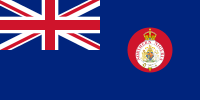Sayfawa dynasty
Part of a series on the |
|---|
| History of Northern Nigeria |
 |
|
Timeline
|
|
By ethnicity
|
|
By topic
|
|
By Province
|

Sayfawa dynasty or more properly Sefuwa dynasty is the name of the kings (or mai, as they called themselves) of the Kanem-Bornu Empire, centered first in Kanem in western Chad, and then, after 1380, in Borno (today north-eastern Nigeria).
The dynasty was rooted in the Tubu expansion by the Kanembu.[1] The first ten kings present in the list in the Girgam are difficult to date and to identify. The dynasty, one of Africa's longest reigning, lost the throne in 1846.
In his forwarding for the book[2] of the Kanemi cleric Ibrahim Saleh Al-Hussaini 'The Lives of the Arabs in Kanem Empire', head of The Awqaf London, the Nigeria-born British Muslim cleric and academician Sheikh Dr. Abu-Abdullah Adelabu claimed that the name Sayfawa and the Dynasty are both derived from the name of the Arab king ibn Dhī-Yazan and that it is wrong to suggest otherwise.
"The Sayfawa Dynasty took pride in associating their origins to King Sayf ibn Dhī Yazan and his deputies, who had helped him ending Aksumite rule over Southern Arabia with the help of the Sassanid Empire,[3] claimed Adelabu.
Sayfawa-Humewa kings in Kanem
| Name of the king (mai) | Barth 1857[4] | Palmer 1936[5] | Urvoy 1941[6] |
|---|---|---|---|
| (12) Hume | 1086–1097 | 1086–1097 | 1085–1097 |
| (17) Dunama Dibbalemi | 1221–1259 | 1221–1259 | 1210–1224 |
| (48) Ali Gajideni | 1472–1504 | 1476–1503 | 1473–1507 |
| (49) Idris Katakarmabe | 1504–1526 | 1503–1526 | 1507–1529 |
| (54) Idris Alauma | 1571–1603 | 1570-1602/3 | 1580–1616 |
See also
References
- ↑ US Country Studies: Chad
- ↑ Ibrahim Saleh Al-Hussaini, History of Islam and Lives of the Arabs in Kanem Empire, Kano 1978.
- ↑ Hoyland, Robert (2002). Arabia and the Arabs: From the Bronze Age to the Coming of Islam. Routledge. pp. 56–57. ISBN 9781134646340.
- ↑ Barth, Travels, II, 15-25, 581-602.
- ↑ Palmer, Bornu, 112-268.
- ↑ Urvoy "Chronologie", 27-31.
Bibliography
- Barkindo, Bawuro (1985). "The early states of the Central Sudan", in: J. Ajayi and M. Crowder (eds.), The History of West Africa, vol. I, 3rd ed. Harlow, 225-254.
- Barth, Heinrich (1858). "Chronological table, containing a list of the Sefuwa", in: Travel and Discoveries in North and Central Africa. Vol. II, New York, 581-602.
- Lavers, John (1993). "Adventures in the chronology of the states of the Chad Basin". In: D. Barreteau and C. v. Graffenried (eds.), Datations et chronologies dans le Bassin du Lac Chad, Paris, 255-267.
- Levtzion, Nehemia (1978):"The Saharan and the Sudan from the Arab conquest of the Maghrib to the rise of the Almoravids", in: J. D. Fage (ed.), The Cambridge History of Africa, vol. II, Cambridge 1978, pp. 637–684.
- Nehemia Levtzion und John Hopkins (1981): Corpus of Early Arabic Sources for West African History, Cambridge.
- Smith, Abdullahi (1971). The early states of the Central Sudan, in: J. Ajayi and M. Crowder (Hg.), History of West Africa. Vol. I, 1. Ausg., London, 158-183.
- Stewart, John (1989). African States and Rulers: An encyclopedia of Native, Colonial and Independent States and Rulers Past and Present. Jefferson, NC: McFarland & Company, Inc., Publishers. p. 395 Pages. ISBN 0-89950-390-X.
- Urvoy, Yves (1941). "Chronologie du Bornou", Journal de la Société des Africanistes, 11, 21-31.